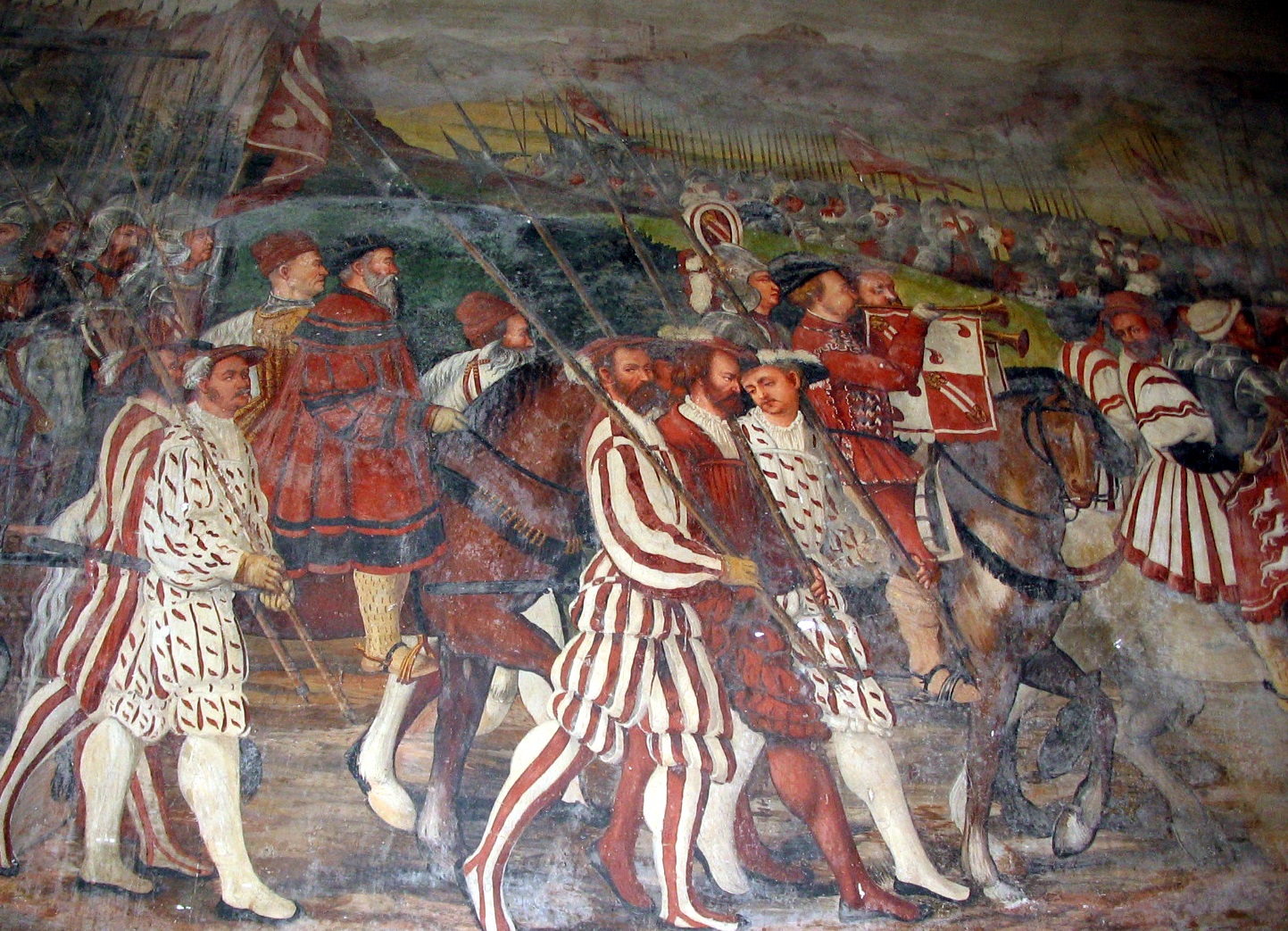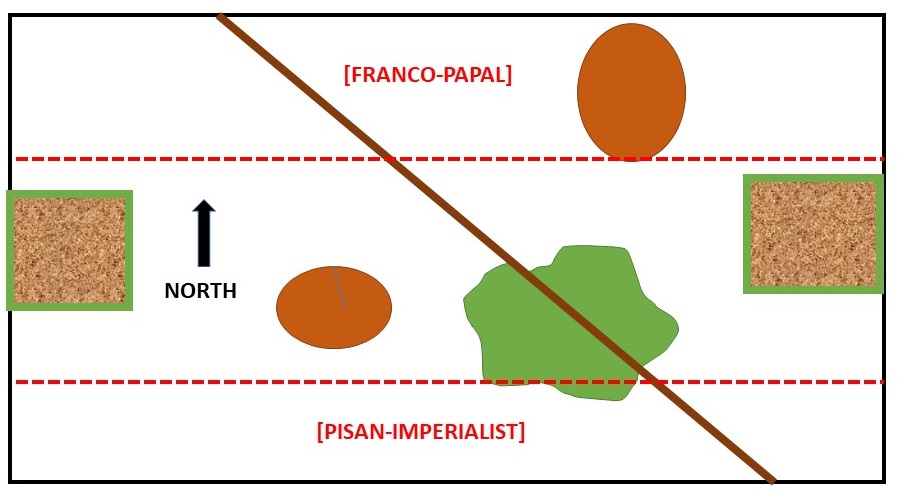Pisa, 1502
A Scenario for El Gran Capitan


Ceasare Borgia - the model for Macchiavelli's Prince - conducted a series of campaigns (the three "Impressas") in his seizure of control of much of northern Italy in the name of Pope Alexander VI during the period between the First Italian War and the Second Italian War. Combining statecraft and military power - both wielded with admirable duplicity - he managed to assert control over a wide range of small principalities and city-states. He manipulated the French, the Milanese, the Florentines, and the Venetians to achieve his ends, stabbing a lot of friends in the back along the way. During the course of these campaigns, he laid siege to Pisa, a Tuscan city which was at the time independent of Florentine control, and a city which had ties to the Holy Roman Empire.
This fictional scenario depicts a battle between the Pisans, with support from the Imperialists and Spanish, and the Papal-French forces, taking place during the Second Impressa. In this scenario, the Pisans have learned of an impending attack on their city, and have managed to obtain the services of both Imperialist and Spanish contingents, at this time both opposed to the French plans for Italy, which included backing the Borgia popes in order to obtain support for their coming invasion of Naples. Instead of waiting for a siege, the Pisans have taken the field and confront their Papal foes in the open field.
The map below shows the table. The northern hill is rough and provides soft cover - the southern hill is smooth and open. The woods are rough and provide soft cover. The fields tat the eastern and western edges of the table are rough ground, but only the hedges and low walls at their edges will provide cover (soft cover).

The two opposing sides will set up according to map deployments made blind, without knowledge of their opponent's dispositions. Each must stay behind the dotted lines to the north and south of the map, respectively.
Each side has four commanders, all Average. One is the overall commander and may command any unit on their side. Units may be divided into battles as desired, but no more than 4 (one per commander). Each side will also have a base camp which they can deploy anywhere within their set-up area.
Condottieri Cavalry: 4 bases Gendarmes
Condottieri Cavalry: 4 bases Gendarmes
Stradiotti: 4 bases Mounted Crossbows/Arquebusiers
Italian Light Horse: 2 bases Mounted Crossbows
Provisionatti Crossbowmen: 3 bases Crossbows
Provisionatti Crossbowmen: 3 bases Crossbows
Provisionatti Crossbowmen: 3 bases Crossbows
Swiss Pikemen: 3 bases Swiss Pikemen
Swiss Halberdiers: 2 bases Forlorn Hope
Swiss Crossbows: 4 bases Skirmishers
Artillery: 1 base Light Cannon
Artillery: 1 base Medium Cannon
Cernide Infantry: 4 bases Footmen
Cernide Crossbowmen: 4 bases Skirmishers
Pisan Nobles: 4 bases Gendarmes
Italian Heavy Cavalry: 4 bases Gendarmes
Italian Light Horse: 4 bases Mounted Arquebus
Spanish Arquebusiers: 3 bases Arquebusiers
Spanish Pikemen: 3 bases Spanish Pikemen
Landsknecht Pikemen: 3 bases Landsknecht Pikemen
Landsknecht Shot: 3 bases Crossbows
Landsknecht Shot: 3 bases Crossbows
Landsknecht Zweihanders: 2 bases Forlorn Hope
Landsknecht Skirmishers: 4 bases Skirmishers
Pisan Provisionatti: 2 bases Footmen
Artillery: 1 base Light Cannon
Italian Handgunners: 4 bases Skirmishers
The winner is the side which first breaks the enemy army.